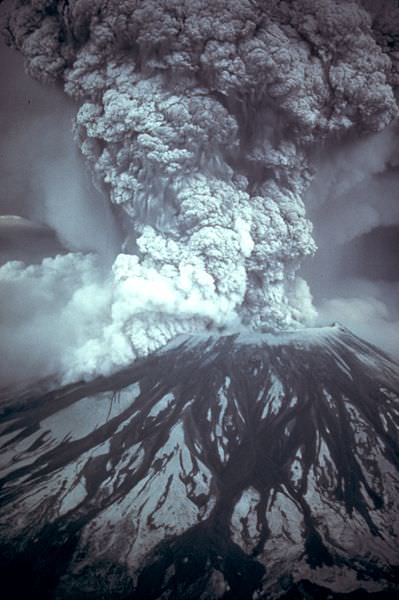[/caption]
At any time there are about 20 volcanoes actively erupting around the world, and about 50-70 volcanoes have erupted in the last year or so. There are a total of 550 volcanoes that have erupted in all of recorded history. Some of these active volcanos are extremely famous, often because of a tremendous loss of life. Here’s a list of some famous volcanoes:
Caribbean
- Mount Pelee – A stratovolcano on the island of Martinique that killed more than 30,000 people during an eruption in 1902.
- Soufriere Hills – A dormant volcano that returned to life in 1995 forcing the evacuation of the island of Montserrat.
Volcanoes in Costa Rica
- Arenal Volcano
- Barva Volcano
- Irazu Volcano
- Poas Volcano
- Rincon de la Vieja
- Turrialba Volcano
Volcanoes in Guatemala
- Fuego
- Pacaya
- Santa Maria
Ecuador
- Cotopaxi – A very active volcano in Ecuador, popular with hikers.
- Chimborazo – This dormant stratovolcano is the highest point in Ecuador, and actually the most distant point from the center of the Earth.
- Cayambe – Another dormant stratovolcano in Ecuador. It’s the third tallest peak in the country.
Greece
- Thera – The volcano that devastated the island of Santorini; one of the most powerful volcano eruptions in recorded history.
Indonesia
- Krakatoa – This used to be an island in the Sunda Strait near the island of Java. It exploded in 1883 creating one of the largest eruptions in recorded history.
- Mount Tambora – A stratovolcano on the island of Sumbawa in Indonesia. It exploded in 1815 producing the most powerful eruption in recorded history.
- Mount Merapi – An active volcano in Indonesia, on the island of Java near the city of Yogyakarta. It’s so active that ash is almost constantly coming out the top of the volcano, and it has had several recent devastating eruptions.
Italy
- Mount Etna – An active volcano on the Island of Sicily. It’s in an almost constant state of eruption, with huge ash clouds visible from the island.
- Mount Vesuvius – A dangerous volcano near Italian city of Naples. It’s most famous for the devastating eruption in AD 79 that destroyed the towns of Pomeii and Herculaneum.
- Mount Stromboli – An active volcano just off the coast of Sicily. It has been constantly erupting for the last 2,000 years or so.
Japan
- Mount Fuji – The iconic Japanese stratovolcano – the highest point in Japan.
Mexico
- Barcena
- Ceboruco
- Chichinautzin
- Cofre de Perote
- Colima
- El Chichon
- Jocotitlan Volcano
- Nevado de Toluca
- Paricutin
- Pico de Orizaba
- Popocatepetl
- San Martin
- Socorro
- Tacana
Philippines
- Mount Pinatubo – An active stratovolcano in the Philippines that erupted in 1991, producing the second most powerful eruption in the 20th century.
- Mount Mayon – This stratovolcano in the Philippines has one of the most perfect cones of all the volcanoes in the world.
United States (Hawaii volcanoes)
- Mauna Loa – This active shield volcano is the second tallest volcano in the world, but it’s the biggest volcano in the world, with the most volume. It has erupted within the last century.
- Hualalai – The third most active volcano in Hawaii.
- Kilauea – An active volcano on the eastern side of the Island of Hawaii. It’s in an almost constant state of eruption, and one of the most active volcanoes in the world.
- Kohala – The oldest of the 5 volcanoes on the Big Island of Hawaii.
- Mauna Kea – The tallest volcano in the world, located on the Big Island of Hawaii.
- Mount St. Helens – An active volcano in Washington State. It detonated in 1980, destroying thousands of square km of forest and killed 57 people.
- Mount Mazama – This is the name for the stratovolcano that exploded more than 7000 years ago, creating what is now Crater Lake in Oregon.
- Mount Rainier – An active stratovolcano that dominates the skyline over Seattle. 150,000 people live on mudflows that erupted out of the volcano 5,000 years ago.
Want more resources on the Earth? Here’s a link to NASA’s Human Spaceflight page, and here’s NASA’s Visible Earth.
We have also recorded an episode of Astronomy Cast about Earth, as part of our tour through the Solar System – Episode 51: Earth.
Reference:
USGS Volcano Hazards Program

